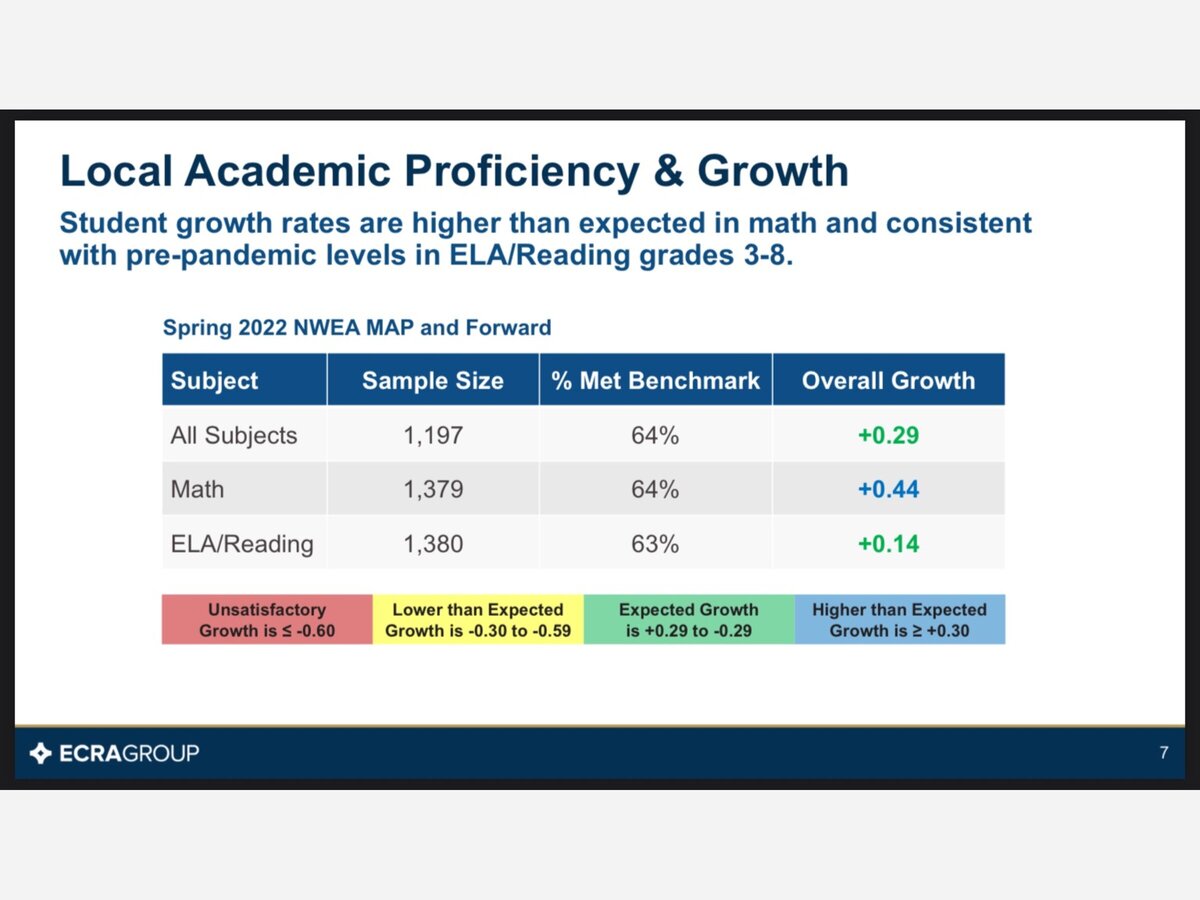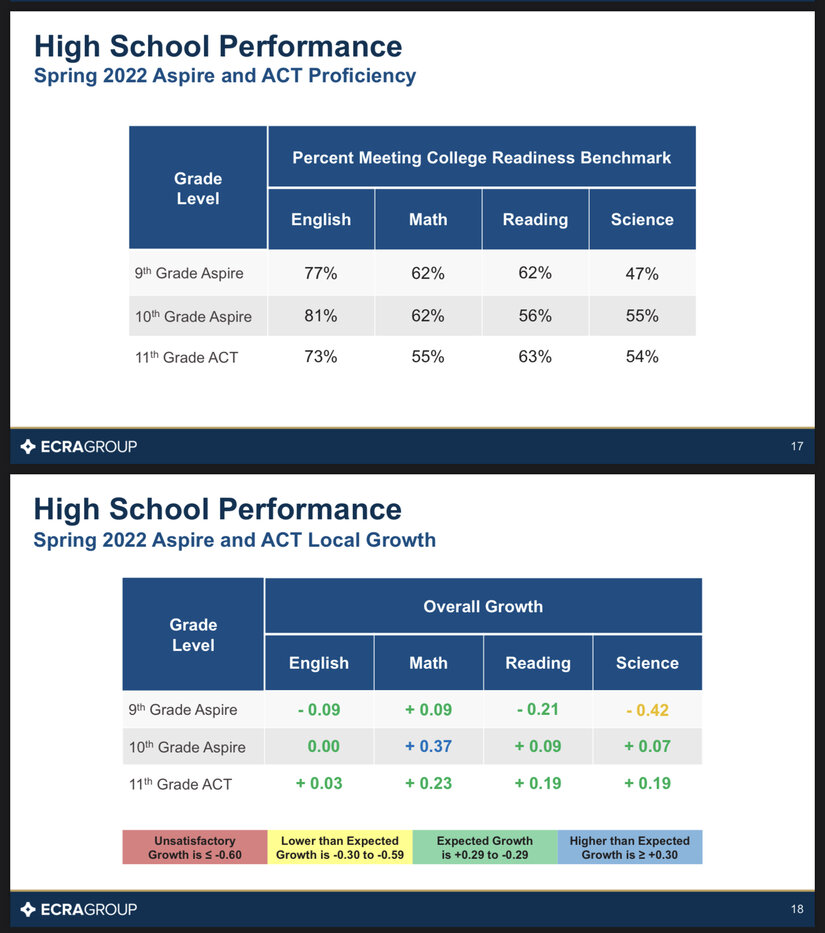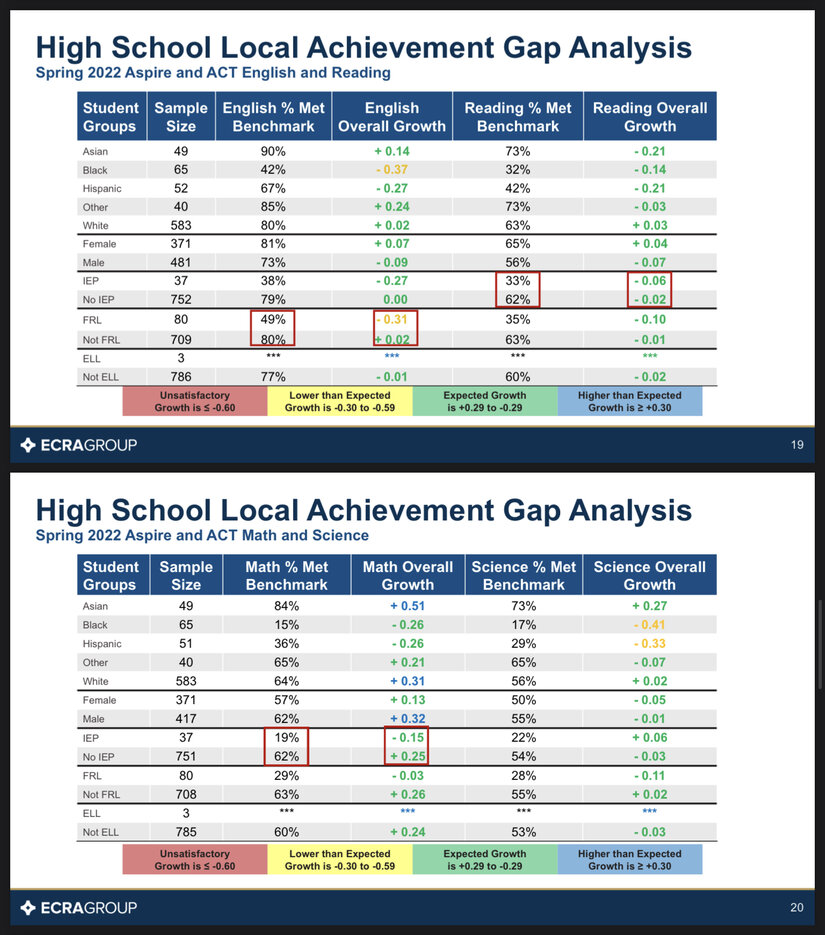Image

MEQUON, Wis.—The ECRA Group presented its analysis of student achievement and growth results to the Mequon-Thiensville Board of Education at its working board meeting Monday. President of the ECRA Group Gina Siemienciec’s presentation focused on the areas of achievement proficiency, academic growth, and achievement gaps. The assessments used were state of Wisconsin Forward test results, NWEA MAP testing data and ACT Aspire tests.
According to MTSD Superintendent Matthew Joynt, the ECRA Group has been working with the district for about a decade overall and for several years using their local growth model to produce a reliable and valid index of student performance from various yearly assessments taken as well as predict expected growth. These results can be used by MTSD “to better understand the strengths and weaknesses of curriculum and instruction, the effect of specific programming, and to determine where to focus on specific improvement needs”, district information said.
Results in all subject areas for grades 3-8 showed a positive .29 growth score or 64% met that benchmark; math showed a higher than expected positive growth rate of .44 with 64% meeting the benchmark; and ELA/Reading showed a positive .14 growth rate.
“There’s tremendous growth,” Siemienciec said. “Math is the main driver.”
Spring 2022 NWEA MAP and Forward ELA/Reading testing data growth was consistent with district projections with a few exceptions. Grade 4 showed negative growth below expectations in MAP by -.18 and Forward -.03, with MAP at 61% and Forward at 68% growth.
Ninth grade ACT Aspire testing showed a much lower than expected decline of -.42 growth in Science, and a negative .09 decrease in expected growth in English along with a larger decrease of expected growth in Reading at -.21. Tenth and eleventh grade Math, by comparison, showed a positive growth rate of .37 and .23, respectively.

When evaluating High School Local Achievement Gaps, there was lower than expected growth in English, especially in the Free and Reduced lunch category – 49% met the benchmark compared to 80% of those not getting free and reduced lunch. Further, the Black student population in English overall showed a -.37 growth rate with only 42% meeting that benchmark. Hispanics also showed a decline in overall English scores at -.27 with 67% meeting the benchmark, and had a -.21 overall Reading decline, or only 42% met that benchmark.

When looking at spring ACT and Aspire test results, high school students who are on free and reduced lunch as well as those who have an Individual Educational Plan showed a decrease in growth rates and meeting benchmarks compared to those not on IEPs or on free and reduced lunch programs. Only 33% met the reading benchmark compared to 62%, though both groups showed negative overall growth over the school year. In math, the IEP group showed only 19% met the benchmark, while 62% of those who don’t have an IEP met the benchmark. Science showed a similar achievement gap with 22% meeting that benchmark and 54% without IEPs meeting the benchmark.
“We have some great growth in 10th grade math, for example,” said board member Paul Buzzell. “Do you ever go back and look and say…every year in 10th grade math do really well versus it’s just this one group that’s doing well?”
Siemienciec responded that “it’s likely very systemic…This is the flashlight to help guide an evidence-based practice.”
To view more of the ECRA Group presentation slides, click here.